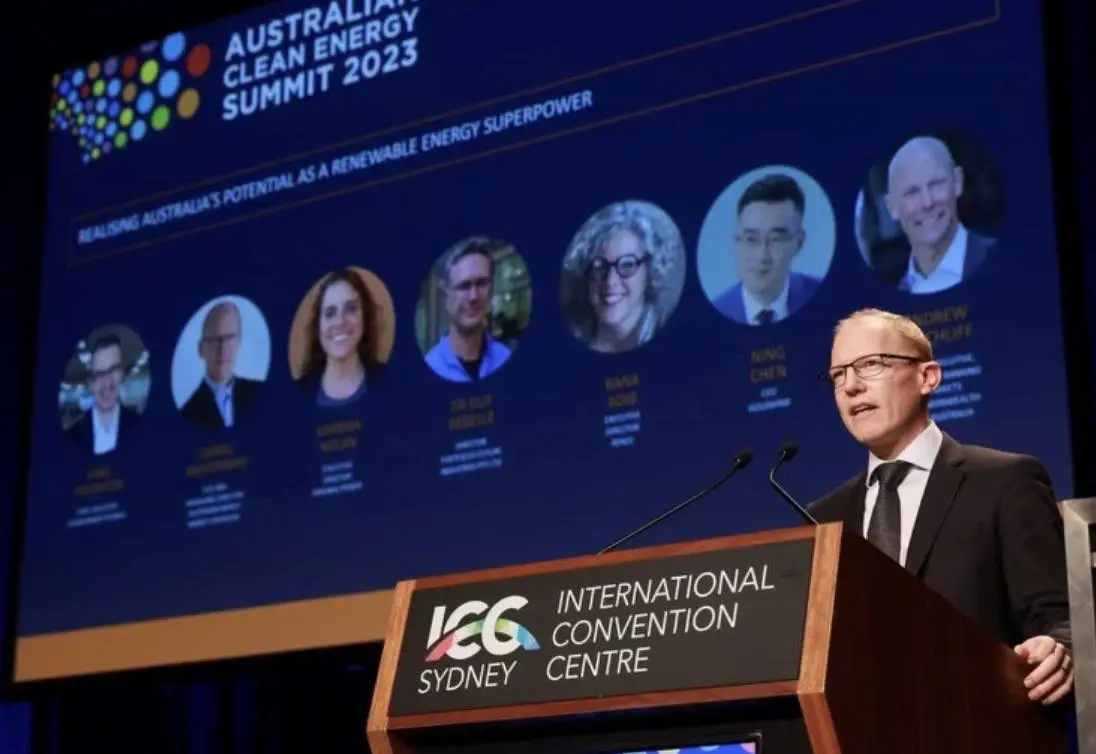The head of the Australian Energy Market Operator has underlined the world leading nature of the country’s transition to 100 per cent renewables and the technology challenges in pushing coal and other synchronous generation out of the grid.
AEMO has forecast that Australia’s National Electricity Market could have enough wind and solar to meet all grid demand at certain times as early as 2025, and is scrambling to make sure it has the engineering protocols in place to accommodate this world-first achievement.
“When renewables flood the power system, they can push out synchronous generation and the steady electrical heartbeat that we’ve relied on for so long,” chief executive Daniel Westerman told the Australian Celan Energy Conference in Sydney on Tuesday.
“We’re a fair way down the road in understanding what a power system running on high levels of inverter-based resources requires to operate reliably.
“This is truly world-leading work, where we are collaborating with system operators and research institutions around the globe.”
AEMO last week released the latest engineering roadmap which listed its priorities in getting the grid ready to accommodate periods of 100 per cent renewables.
It includes a focus on having technologies – such as grid forming inverters – that will become the new “electrical heartbeat, and on managing largely distributed resources such as rooftop solar that are largely “invisible” in terms of grid management to the market operator.
One of the major challenges is to ensure that the huge pipeline of wind, solar and storage projects can get connected, and meet its targets, which include an average 82 per cent renewables by 2030.
Westerman says that will require a three fold increase in large scale wind and solar to 48GW by 2030, and a another three-fold increase to more than 150GW by 2050 to keep pace with the electrification of transport and industry. Storage needs to expand by a factor to 30 from where it is today to 60GW.
He said the connection process – one of the bugbears of the wind and solar industry, many of whom have suffered significant delays in recent years – has improved.
“From FY22 to FY23, we’ve seen a 10% improvement in average processing time across the application and registration processes, and a 20% time improvement for commissioning,” Westerman said.
“Collectively, this means a 3-month decrease in the end-to-end processing time for connections.
“I know there’s more to these timeframes than just the AEMO process, but I do believe these are examples of how focus, collaboration and a genuine commitment from all parties can achieve positive results.
“And when we look at the grid connections processes around the world, the feedback I get is that Australia is leading the way.
“But we also recognise stakeholders’ feedback that the technical registration phase is still a concern, and we continue to actively support efforts to improve it. AEMO is committed to building a connection process that is transparent, consistent, timely and cost effective.”
Westerman also pointed to the latest released of the GenCost report, prepared with CSIRO, which once again underlines the cost advantage of wind, solar and storage over other technologies.
“Our operational insights confirm the effect of renewables on the National Electricity Market: more renewable output puts downward pressure on wholesale electricity prices, and reduces emissions,” he said.










